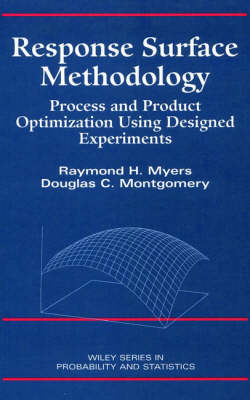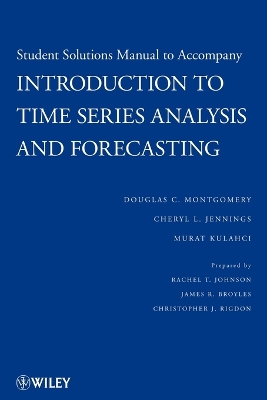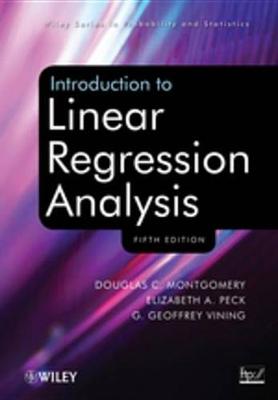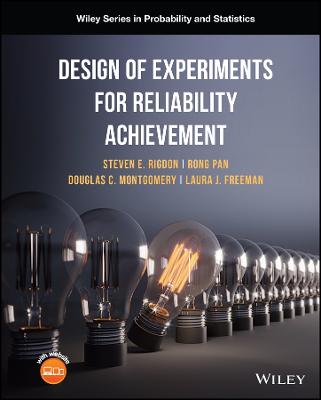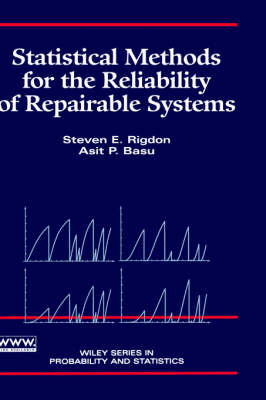Wiley Series in Probability and Statistics
3 primary works • 9 total works
Book 526
Introduction to Time Series Analysis and Forecasting
by Douglas C Montgomery, Cheryl L. Jennings, and Murat Kulahci
Seven easy-to-follow chapters provide intuitive explanations and in-depth coverage of key forecasting topics, including: Regression-based methods, heuristic smoothing methods, and general time series models Basic statistical tools used in analyzing time series data Metrics for evaluating forecast errors and methods for evaluating and tracking forecasting performance over time Cross-section and time series regression data, least squares and maximum likelihood model fitting, model adequacy checking, prediction intervals, and weighted and generalized least squares Exponential smoothing techniques for time series with polynomial components and seasonal data Forecasting and prediction interval construction with a discussion on transfer function models as well as intervention modeling and analysis Multivariate time series problems, ARCH and GARCH models, and combinations of forecasts The ARIMA model approach with a discussion on how to identify and fit these models for non-seasonal and seasonal time series The intricate role of computer software in successful time series analysis is acknowledged with the use of Minitab, JMP, and SAS software applications, which illustrate how the methods are imple-mented in practice.
An extensive FTP site is available for readers to obtain data sets, Microsoft Office PowerPoint slides, and selected answers to problems in the book. Requiring only a basic working knowledge of statistics and complete with exercises at the end of each chapter as well as examples from a wide array of fields, Introduction to Time Series Analysis and Forecasting is an ideal text for forecasting and time series courses at the advanced undergraduate and beginning graduate levels. The book also serves as an indispensable reference for practitioners in business, economics, engineering, statistics, mathematics, and the social, environmental, and life sciences.
Book 705
Response Surface Methodology
by Raymond H Myers and Douglas C Montgomery
Book 791
Generalized Linear Models
by Raymond H Myers, Douglas C Montgomery, G. Geoffrey Vining, and Timothy J. Robinson
Time Series Analysis and Forecasting By Example
by Soren Bisgaard and Murat Kulahci
Following a discussion of why autocorrelation is often observed when data is collected in time, subsequent chapters explore related topics, including: Graphical tools in time series analysis Procedures for developing stationary, non-stationary, and seasonal models How to choose the best time series model Constant term and cancellation of terms in ARIMA models Forecasting using transfer function-noise models The final chapter is dedicated to key topics such as spurious relationships, autocorrelation in regression, and multiple time series. Throughout the book, real-world examples illustrate step-by-step procedures and instructions using statistical software packages such as SAS(r), JMP, Minitab, SCA, and R. A related Web site features PowerPoint slides to accompany each chapter as well as the book's data sets. With its extensive use of graphics and examples to explain key concepts, Time Series Analysis and Forecasting by Example is an excellent book for courses on time series analysis at the upper-undergraduate and graduate levels. it also serves as a valuable resource for practitioners and researchers who carry out data and time series analysis in the fields of engineering, business, and economics.
Seven easy-to-follow chapters provide intuitive explanations and in-depth coverage of key forecasting topics, including: Regression-based methods, heuristic smoothing methods, and general time series models Basic statistical tools used in analyzing time series data Metrics for evaluating forecast errors and methods for evaluating and tracking forecasting performance over time Cross-section and time series regression data, least squares and maximum likelihood model fitting, model adequacy checking, prediction intervals, and weighted and generalized least squares Exponential smoothing techniques for time series with polynomial components and seasonal data Forecasting and prediction interval construction with a discussion on transfer function models as well as intervention modeling and analysis Multivariate time series problems, ARCH and GARCH models, and combinations of forecasts The ARIMA model approach with a discussion on how to identify and fit these models for non-seasonal and seasonal time series The intricate role of computer software in successful time series analysis is acknowledged with the use of Minitab, JMP, and SAS software applications, which illustrate how the methods are imple-mented in practice.
An extensive FTP site is available for readers to obtain data sets, Microsoft Office PowerPoint slides, and selected answers to problems in the book. Requiring only a basic working knowledge of statistics and complete with exercises at the end of each chapter as well as examples from a wide array of fields, Introduction to Time Series Analysis and Forecasting is an ideal text for forecasting and time series courses at the advanced undergraduate and beginning graduate levels. The book also serves as an indispensable reference for practitioners in business, economics, engineering, statistics, mathematics, and the social, environmental, and life sciences.
Introduction to Linear Regression Analysis
by Douglas C Montgomery, Elizabeth A. Peck, and G. Geoffrey Vining
Design of Experiments for Reliability Achievement
by Steven E. Rigdon, Rong Pan, Douglas C Montgomery, and Connie M. Borror
ENABLES READERS TO UNDERSTAND THE METHODS OF EXPERIMENTAL DESIGN TO SUCCESSFULLY CONDUCT LIFE TESTING TO IMPROVE PRODUCT RELIABILITY
This book illustrates how experimental design and life testing can be used to understand product reliability in order to enable reliability improvements. The book is divided into four sections. The first section focuses on statistical distributions and methods for modeling reliability data. The second section provides an overview of design of experiments including response surface methodology and optimal designs. The third section describes regression models for reliability analysis focused on lifetime data. This section provides the methods for how data collected in a designed experiment can be properly analyzed. The final section of the book pulls together all of the prior sections with customized experiments that are uniquely suited for reliability testing. Throughout the text, there is a focus on reliability applications and methods. It addresses both optimal and robust design with censored data.
To aid in reader comprehension, examples and case studies are included throughout the text to illustrate the key factors in designing experiments and emphasize how experiments involving life testing are inherently different. The book provides numerous state-of-the-art exercises and solutions to help readers better understand the real-world applications of experimental design and reliability. The authors utilize R and JMP® software throughout as appropriate, and a supplemental website contains the related data sets.
Written by internationally known experts in the fields of experimental design methodology and reliability data analysis, sample topics covered in the book include:
- An introduction to reliability, lifetime distributions, censoring, and inference for parameter of lifetime distributions
- Design of experiments, optimal design, and robust design
- Lifetime regression, parametric regression models, and the Cox Proportional Hazard Model
- Design strategies for reliability achievement
- Accelerated testing, models for acceleration, and design of experiments for accelerated testing
The text features an accessible approach to reliability for readers with various levels of technical expertise. This book is a key reference for statistical researchers, reliability engineers, quality engineers, and professionals in applied statistics and engineering. It is a comprehensive textbook for upper-undergraduate and graduate-level courses in statistics and engineering.
Advanced Statistical Quality Control
by Murat Kulahci and Connie M. Borror
Statistical Methods for the Reliability of Repairable Systems
by Steven E. Rigdon and Asit P Basu
Data analysis methods are discussed for both single and multiple systems and include graphical methods, point estimation, interval estimation, hypothesis tests, goodness-of-fit tests, and reliability prediction. Complete with extensive graphs, tables, and references, Statistical Methods for the Reliability of Repairable Systems is an excellent working resource for industry professionals involved in producing reliable systems and a handy reference for practitioners and researchers in the field.

